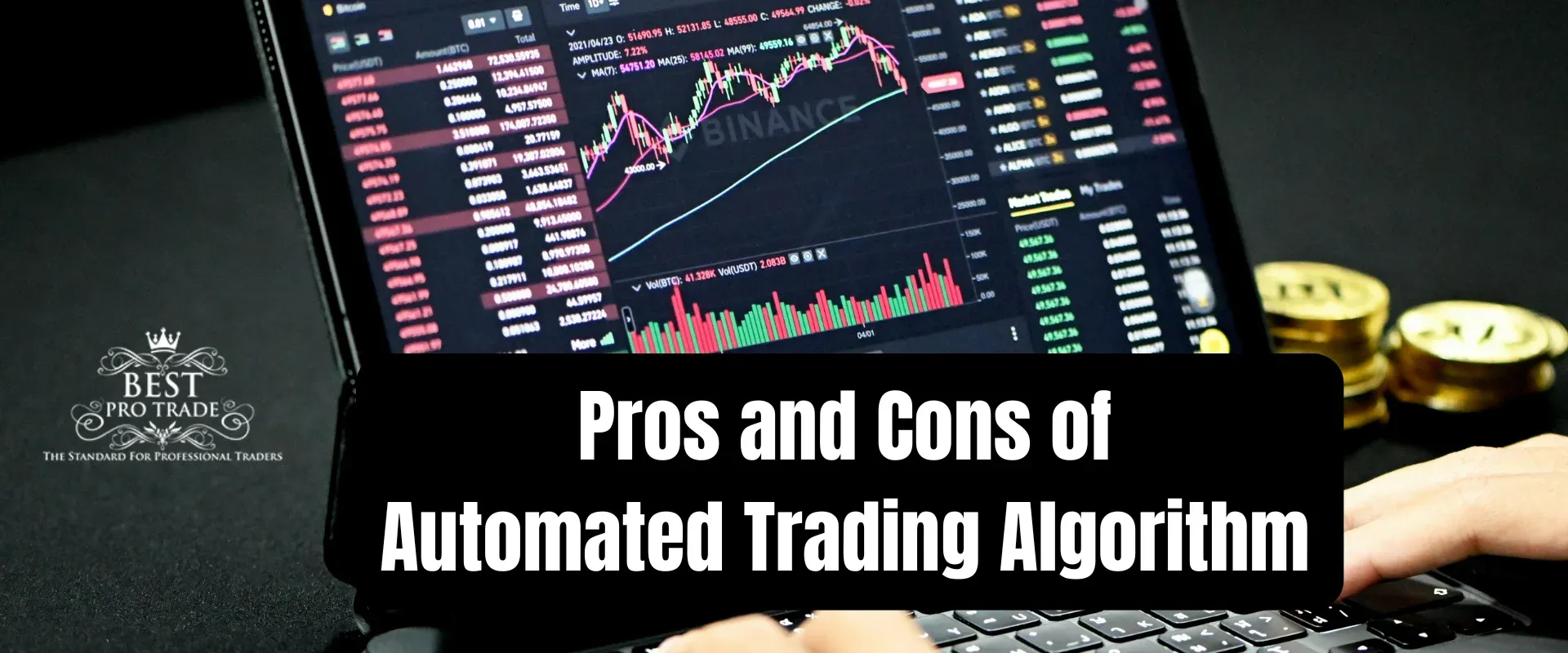An automated trading algorithm is a trading technique that involves employing a preprogrammed set of directions to work in the monetary markets. Hence, it entails using a program to execute selections for entering and exiting trades. With some parameters in place, analyzing information, and a decent strategy, automatic trading reduces risks.
Automated commerce systems are versatile unit systems with speed, analysis, and flexibility to perform multiple commerce tasks in very little to no time. One vital advantage of automatic commerce is that it handles most mental stress concerned with monetary commerce, whereas it still gives you the luxury to make crucial decisions. All the parameters that guide your trade method rely entirely on you, supplying you with full management of your operations.
Best Pro Trade Automated Trading: How It Works
Automated commerce is easy to get by once you understand the fundamentals of the monetary commerce market. With a deliberate strategy, a set of rules and pointers, a custom algorithmic program, and a little bit of expertise, you’re well on your way to a successful trading experience. Automatic trading systems would, however, need a link to an access broker.
An automated trading algorithm works with specific directions, which, once programmed severally, carries out trade via a system. Several massive corporations, monetary establishments, and investors with large-scale investments within the monetary markets use automatic systems. Not surprisingly, even governmental bodies trade massive amounts of their stock with mechanical systems.
First, you may choose an applicable platform for yourself, and draft up a strategy for your targets; With several parameters and an acceptable algorithmic program, the trade is placed on your behalf. With everything set, it’ll regularly monitor your monetary market. Hence, automatic commerce helps you take advantage of unforeseen positive changes within the monetary market.

An automated trading algorithm is a computer program that uses predefined rules and mathematical models to make trading decisions in financial markets. These algorithms can execute trades without human intervention based on parameters such as price, volume, technical indicators, or news sentiment. Here are some key aspects of automated trading algorithms:
- Strategy Definition: Automated trading algorithms are built based on specific trading strategies. These strategies can range from simple ones like moving average crossovers to complex algorithms using machine learning techniques.
- Data Analysis: Algorithms analyze market data in real-time, looking for patterns or signals that match their predefined criteria. They may use historical data for backtesting and refining their strategies.
- Order Execution: When the algorithm identifies a trading opportunity that meets its criteria, it can automatically place buy or sell orders through a connected trading platform or API.
- Risk Management: Good algorithms include risk management protocols to control factors like position size, stop-loss levels, and portfolio diversification to minimize potential losses.
- Monitoring and Optimization: Algorithms are continuously monitored for performance and may be optimized periodically to adapt to changing market conditions or improve their effectiveness.
- Types of Algorithms: There are various types of automated trading algorithms, including trend-following algorithms, mean-reversion strategies, high-frequency trading (HFT) algorithms, and sentiment analysis-based algorithms.
- Market Impact: Large-scale adoption of automated trading algorithms has led to discussions about their impact on market dynamics, including liquidity provision, market volatility, and potential systemic risks.
- Regulation: Regulators closely monitor automated trading activities to ensure fair and orderly markets, addressing concerns such as market manipulation, algorithmic glitches, and insider trading risks.
Benefits Of Automatic Trading Algorithm for Futures And Stocks
- Automated commerce helps you align your trading schedule along with your everyday activities; thereby saving you time and energy
- Speedily identifies new changes and opportunities with set indicators and reacts quicker than human traders
- Executes trades as expeditiously and effectively as any other human trader
Pros And Cons of Automated Commerce
Pros of Automatic Commerce Systems
It is quite evident that a commerce system like this could have plenty of benefits. Here are the upsides to using automated systems for trading financial markets:
- Help Keep Emotions In Restraint
There is a popular saying that the financial market is for the strong-willed. Within the monetary market, one second is often the interval between a minor and a harmful loss. A harmful failure will have a negative result on the trader and throw their strategy off its weight. This conjointly goes oppositely. A trader can get too excited over a perceived change and lose sight of his trade plans. With automatic commerce systems, you’ll be able to place yourself on the right track. Therefore, automatic commerce solves the problems of hesitation and over-excitement. Consequently, it’s effective for over-trade and under-trade.
- Backtesting
It is an important term within the financial market. It is a feasibility test that uses set rules and data analysis to see the likelihood of a technique working out. It is very important when choosing a strategy.
- Be Disciplined
Many mistakes beginners make are out of a lack of discipline. Hence, by staying disciplined, you’ll be able to trade the plan and plan the trade.
Automated Systems Help Make Quick Trading Orders.
- Use of multiple accounts
Cons of Automatic Commerce Systems
- While automated systems appear to have massive advantages, they’re not 100% good. Here are some step-backs to their use:
- Possibility of system failure
- Requires frequent monitoring [power loss, crashes, and system quirks]
Automated commerce systems are undoubtedly very efficient. However, it does not outsmart well-executed manual trading
Check out our YouTube channel to learn more about our automated trading systems.

